Although I may have been critical of Te Papa in the past (well, if not to you, publicly, then i have at least muttered something to myself on occasions), Saturday was possibly their finest hour. Indeed, for one whole day, Te Papa stopped being the sucky big children’s playground and instead became an awesome young nerdy persons’s reason for living at all! Yes: the Makertorium came to town. The Wellingtonista told you it was coming – and if you are taking Nerd for Beginners, or Geek 101, then you will have known about it and been there anyway – and it was fab. Not just fab, in fact, and not even pre-fab, but fab-lab magic fab to boot.

Nestled into the old Icon restaurant space, the capital’s finest young geekykids and nerdy parents were gathered, to watch a whole bunch of machines chatter away together, building plastic octocats out of long rolls of stringy plastic. And it was cool – way cool – cooler even than that time that i got stuck inside the freezer.
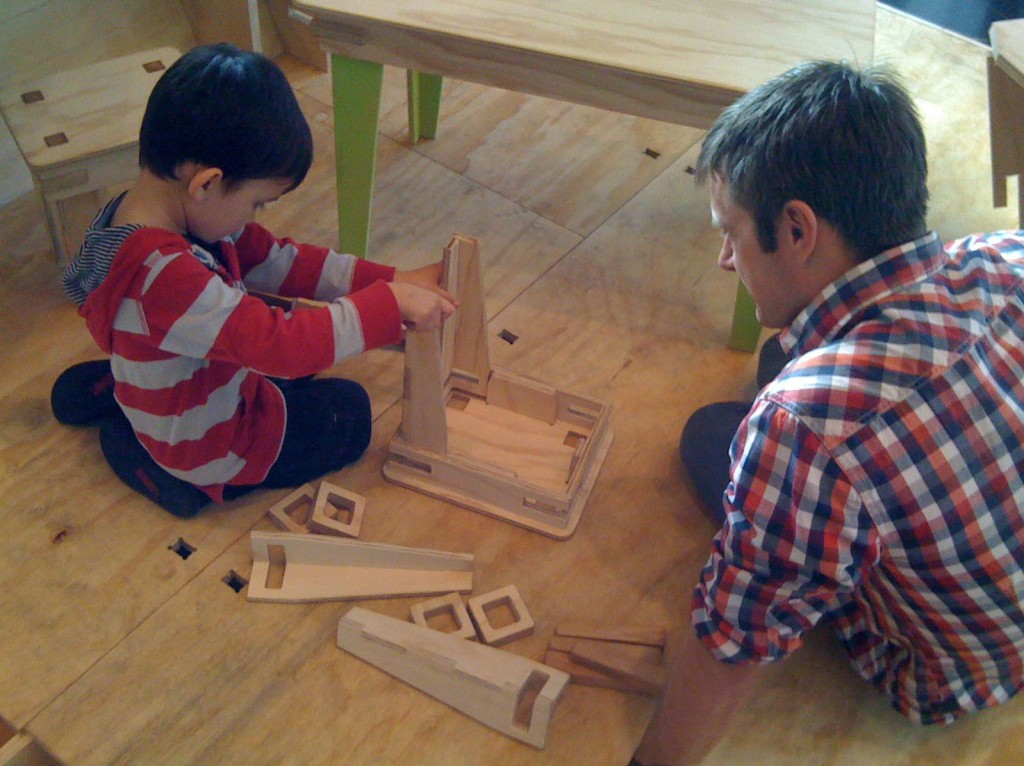
This little guy was barely talking, but still can assemble furniture better than the average Ikea sales rep.
It’s hard to capture the fun and excitement that was packed into the room, with just a few photos, and for more personal feedback you can always go to the makertorium website where others are commenting – but for now, just glory in the photos of the Makertorium wonderfest.

This guy just couldn’t believe his luck! It really was a joy to see – young and old (well, perhaps more honestly: young and wish-they-were-still-young) were packing the venue, with barely room to circulate, and the stars were the deceptively simple machines of the geeky kids. Somehow, in the last couple of years, the democratization of the engineering process has happened. It’s not only been and gone, but is now been back again, and this time it’s bringing it’s dad making itself a clone. Truth be told – I’m intrigued. The robots have indeed found a way to replicate themselves, to make open source parts that can recreate themselves as more open source parts. To print your own replacement. If only I could do that with my knees.
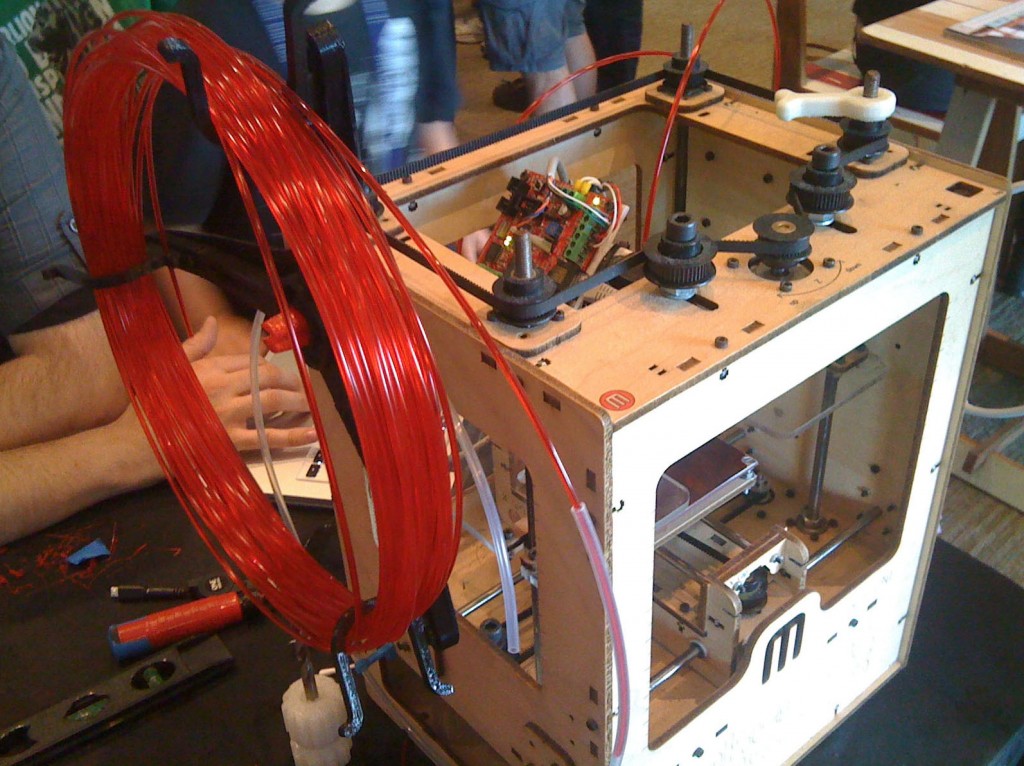
It’s not quite the picture of doom that we had from Hollywood, where in Terminator we found out that in the future, machines would find a way to destroy humankind by building an army of robotic drones. Robots would make more robots, and eventually they would rise against their human masters and wipe them out. Perhaps this is how it all starts, with keen weekend robotic craft makers getting Makerbot v1 print out parts for MakerBot v2 and so on, but there seemed to be a definite lack of large scale firepower there in Te Papa. But there were some guys with aerial drones – cool as a cucumber, in SWAT issue black carbon-fibre with a 5 rotor helicopter. So cool, even the police have to ask if they can borrow it.
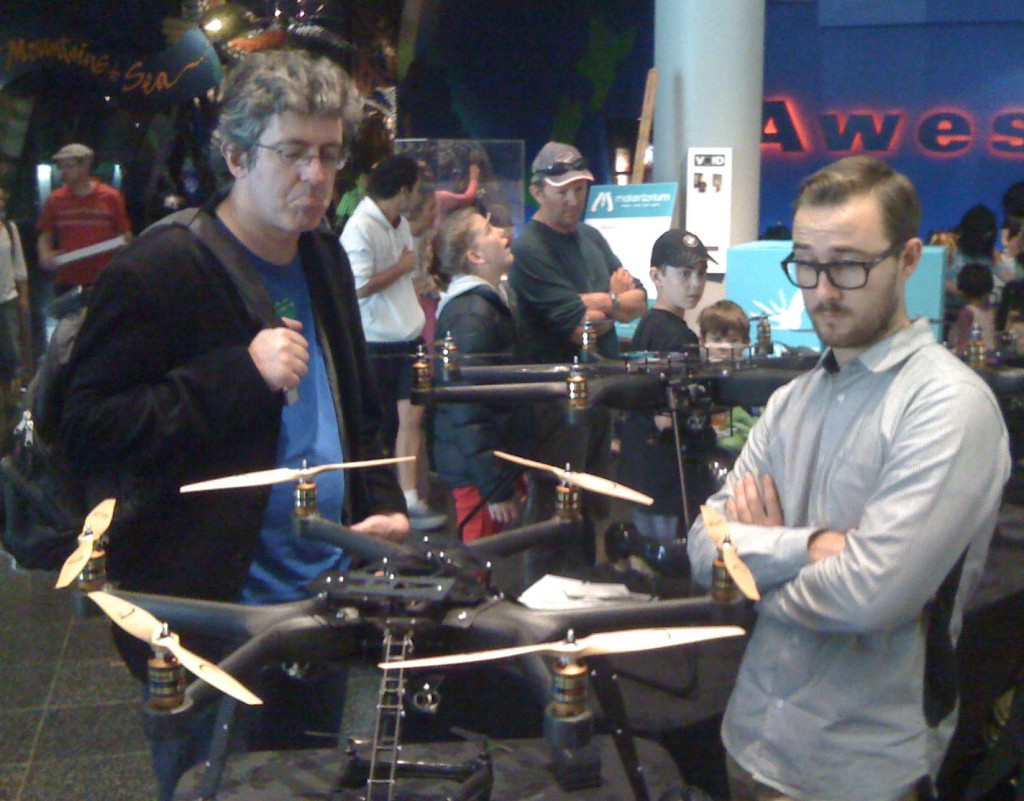
Of course, the loudest, totally nerdiest, and by far the coolest was the robotic guitar player from Vic Uni’s fledgling School of Engineering – I didn’t even know Vic had a school of Engineering! Hard to explain here from these pictures, but this thing in the picture below plays the guitar, quite clearly and quickly. And with some flashy LED lights. Nice.

This machine here was producing plastic morphed octokittys in fetching red plastic, and I’ve always wanted one of those. Someone else had a robotic kit to animate the head of your toothbrush, leaving it to rustle around your bathroom like a plasticized cockroach. Intriguing, and oddly disturbing as well.
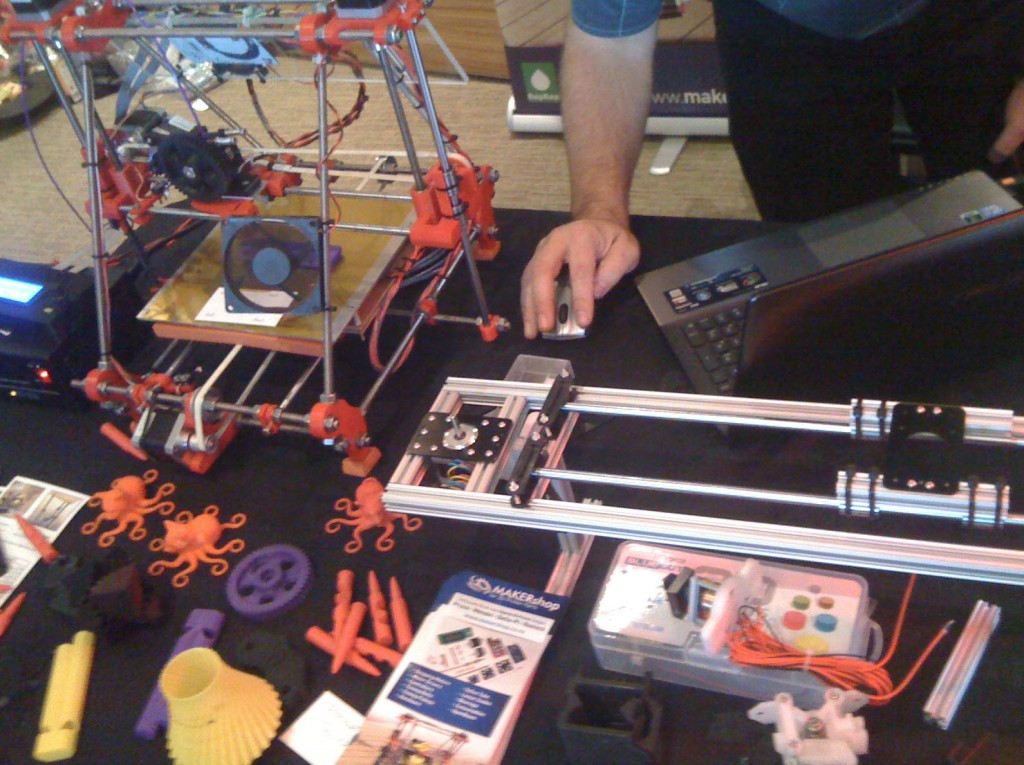
This one below was really the only exhibit which made me feel a little sad. Here, a machine outputs spirally patterns on a long strip of paper, but that made me feel nostalgiac. Did you, as I did, play with Spirograph as a child? Hours and hours would be spent with an array of coloured pens and perspex cogs that rotated within other cogs, and fantastic patterns would arise in green Biro. Here, a machine doesn’t all for you: totally ruined the fun for me…
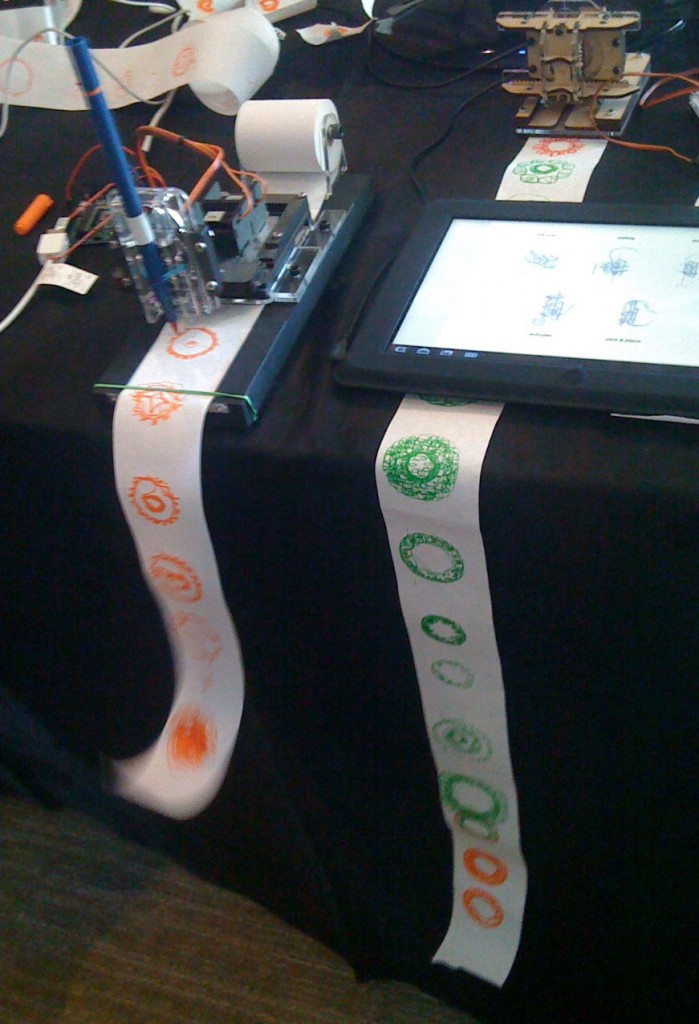
There was, of course, some beauty amongst all the depraved and slightly tacky plastic toolings. These people were welding up a carefully crafted vase, or crumpled sculpture – either way, it looked beautiful.
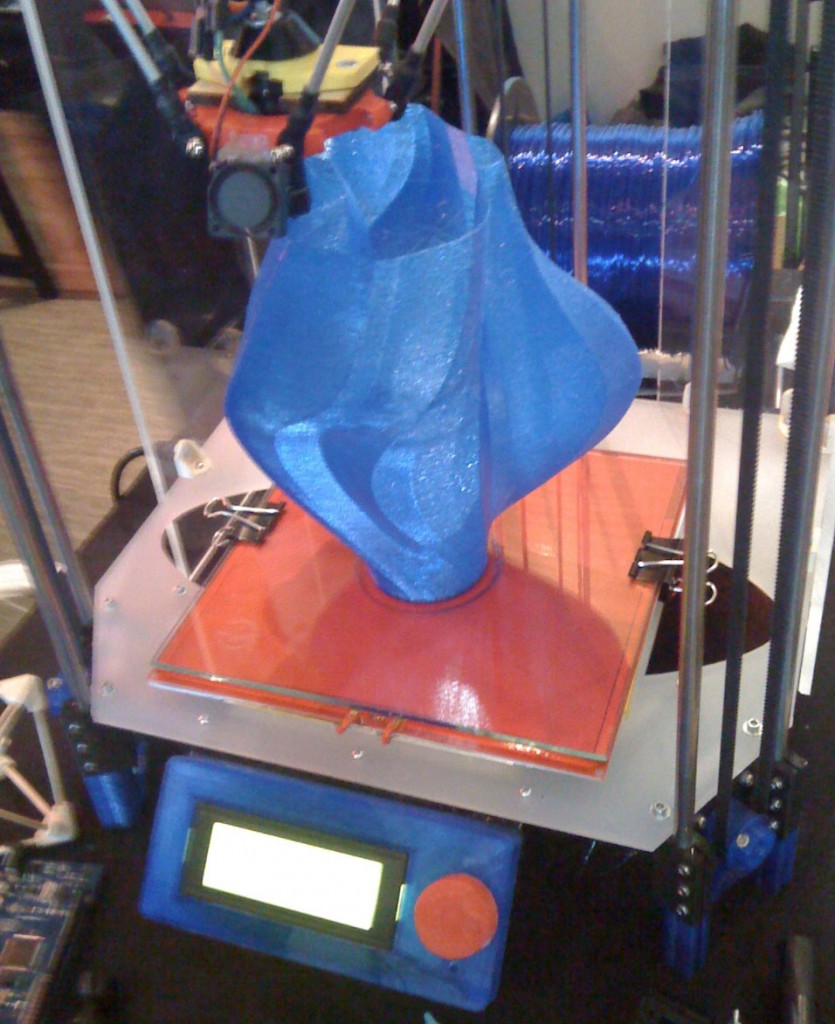
Some people just stood and stared for hours on end. There was much to see.
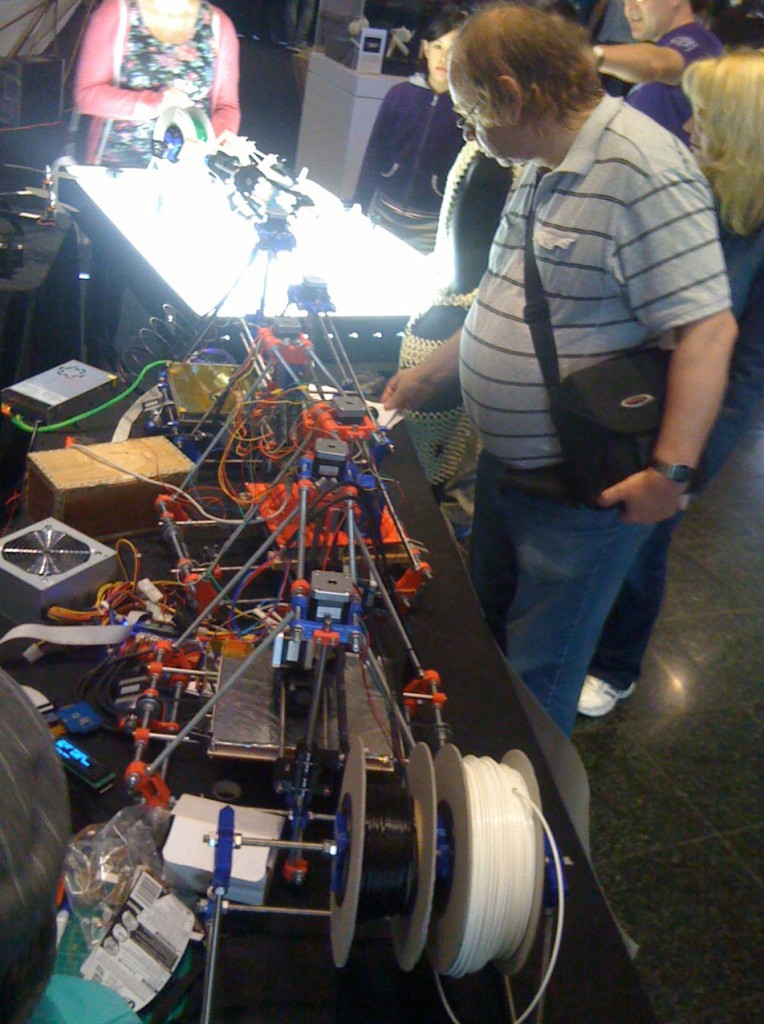
And, despite them making us all stand for hours on end, , there was even a range of open- source tiny chairs for you to admire. A great day was had by all.






Having installed a new spam filter on the Fish recently, I thought I should just check to see if an ordinary comment can get through – as this post has been unusually quiet. Or maybe it’s just crap and uninteresting. Anyway, here is a non-spam comment to test the waters, from an obviously bogus name
Hmmm. Well, that works fine. And no genuine comments therefore.
I’ll just talk to myself in the corner here then….
Incidentally – the spam filter works well!
I’ll be the first genuine comment then.
The “5 rotor helicopter” has six rotors.
I bought a cheap radio controlled helicopter from Dick Smith a couple of months ago. It cost under $30 and I fly it around my apartment. It is more fun than pretty much anything on the television.
Oops, sorry, caught out again. Yes, 6 not 5. Can’t even count!
Yes, those little choppers are great fun – but what I really want is one of those 4-bladed copters that are controlled by tilting your phone – very, very cool. Pricey though – about $800? The big 6 bladed chopper in the pic was many thousands worth…
Micro helicopters are being driven by phone technology. We all want tiny phones that run for a couple of days on a battery charge. That has led to the development of tiny power-efficient CPUs, tiny long lasting batteries, tiny radio receivers and transmitters, tiny antennas, tiny accelerometers and flux gate compasses and gyros, and tiny cameras. Slap a rotor on a phone and you have a cool micro-helicopter that can beam video back to the controller and also stabilise itself. It is a fun hobby and can also be commercialised, although my understanding is that (at least overseas) government regulations are holding commercialisation back.